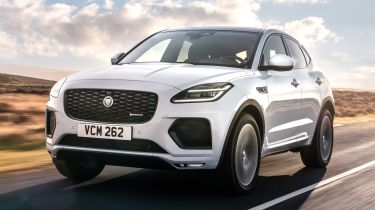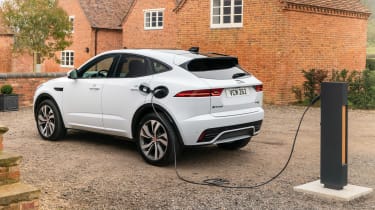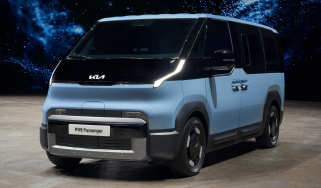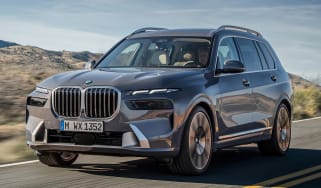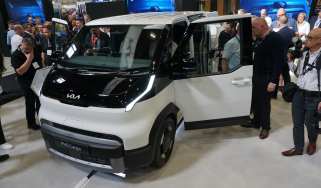Jaguar E-Pace review - MPG, CO2 and running costs
The E-Pace plug-in model should be reasonable to run, but more powerful versions aren’t frugal

A diesel E-Pace makes sense if running costs and frequent longer journeys are a concern, although Jaguar's WLTP fuel economy ratings aren't that great in comparison to rivals. The most basic front-wheel-drive D165 model (now discontinued), equipped with a manual gearbox, is the best performer, claiming up to 45.6mpg with tailpipe CO2 emissions from 162g/km.
The overwhelming majority of buyers will specify an automatic gearbox and all-wheel-drive. Here, the D165 AWD auto returns a best figure of 43.4mpg , but emissions climb to 171g/km. Buyers who opt for the extra power of the D200 MHEV auto – will find that there is no meaningful fuel economy penalty.
Despite all being four-cylinder options, the petrols are thirsty. The basic P200 and more powerful P300 petrol models have been discontinued - understandable when you consider the relatively poor economy of both (around 31mpg), compared to the efficiency of some hybrid rivals.
The P300e PHEV model is the most advantageous on tax with a 32g/km of CO2 rating meaning vehicle excise duty (VED) is set at zero and there are big Benefit-in-Kind advantages with business users attracting a 12 per cent rate.
It will cost you less in fuel too if you can make good use of the 38-mile electric-only range, and for comparison the WLTP figure is 197mpg. Charging the PHEV’s 15kWh battery from 0 to 80 per cent takes an hour and twenty-four minutes from a 7kW wallbox, or around 30 minutes from a rapid charger.
Insurance groups
There’s no denying that the E-Pace occupies lofty insurance groups. The most basic D165 model (now discontinued) sits in group 29, while opting for the D200 HSE pushes up the rating to group 38. The plug-in hybrid version is in group 40-41, depending on which trim level you opt for.
Compared to the Range Rover Evoque the Jaguar should theoretically be cheaper to insure, although it should be said that other rivals slip into lower groups. The Audi Q3, for instance, is lower across its entire line-up.
Depreciation
The E-Pace will hold onto its value pretty well after a typical three-year/36,000-mile period of ownership. Expert data suggests Jaguar's baby SUV should retain around 53 to 56 per cent after this period.

